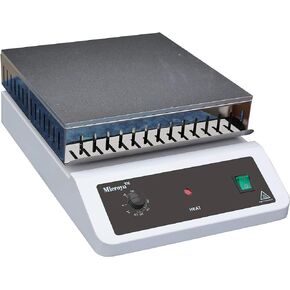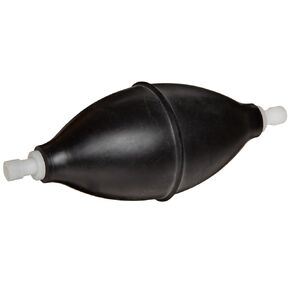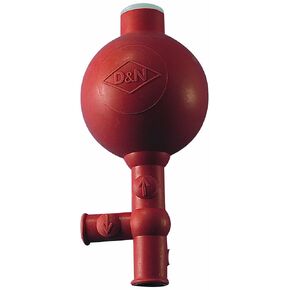- Shopping, made easy.
- /
- Get the app!
The Thomas combination nitrite ion selective electrode (ISE) has a PVC dry contact sensor for measuring the nitrite (NO2-) concentration in surface and drinking water, waste water, fertilizers, soil, food, and other aqueous solutions. The PVC dry contact membrane sensor allows for dry storage, lasts longer than traditional membrane sensors, and requires no preconditioning to allow immediate placement in samples. The electrode's epoxy body is impact resistant, durable, and sealed for minimal maintenance. The electrode is available as a combination electrode that contains both the measuring half-cell and the reference half-cell to minimize electrostatic interference and provide consistent readings, or as a half-cell electrode for use with a double-junction reference electrode (sold separately) to allow the use of outer chamber electrolyte formulas for minimized interference from other ions. The ISE has a measurement range of 460 to 0.5 parts per million (ppm), and its main interfering ion is CN-. It is 12mm in diameter and 145mm long, and has a 1m cable with a Bayonet Neill-Concelman (BNC) connector for attaching to meters with a BNC connection. The electrode operates in temperatures from 0 to 50 degrees C (32 to 122 degrees F). ISEs respond selectively to ions in the presence of other ions, and they are commonly used for water testing and analyzing biological samples in hydroponics, aquaculture, and agriculture, among other applications.
An electrode, also called a sensor or probe, is an instrument used with a meter to test and measure parameters of a substance. All electrodes are probes or sensors, but not all probes are electrodes or sensors. Probes, such as temperature probes, are used to penetrate a material for measurement. Common electrode types are pH, total dissolved solid (TDS), oxidation reduction potential (ORP), and ion selective electrode (ISE). They come in standard models or in all-in-one (sometimes called 3-in-1) models, which have a built-in temperature sensor for automatic temperature compensation (ATC). Electrodes can be half-cell or full- (also called combination) cell type. They can be refillable or non-refillable. Housing material is typically glass or epoxy, and sensors are commonly made with stainless steel or a glass bulb. pH electrodes, which measure the pH of a substance, often have a glass bulb. The bulb senses hydrogen ions, and generates a millivoltage that is picked up by the filling solution and transferred to a wire that connects to the pH meter. ORP, also known as redox, electrodes measure dissolved oxygen in aqueous solutions to determine the level of contaminants and their ability to act as oxidizing or reducing agents. Ion selective electrodes (ISEs) respond selectively to ions in the presence of other ions. Electrodes are commonly used by researchers, manufacturers, and hobbyists in a wide variety of industries, such as aquaculture, agriculture, chemistry, food and beverage, wine-making and water-testing, and for scientific applications. An electrode can be used with a datalogger to assist in temperature measurement.
Thomas Scientific manufactures scientific supplies and equipment such as pH meters, balances, glass and plastic ware, baths, and centrifuges for life science, research, industrial and educational applications. Founded in 1900, Thomas Scientific is headquartered in Swedesboro, NJ.
What's in the Box?Thomas Nitrite ISE
1m cable
Instructions
 SP Bel-Art Digital Hygrometer for Secador Desiccators (H42070-1400)
KWD 28
SP Bel-Art Digital Hygrometer for Secador Desiccators (H42070-1400)
KWD 28
 Large Analog Hot Plate (New Design), 12" x 12" Panel, 350°C, 110V
KWD 154.500
Large Analog Hot Plate (New Design), 12" x 12" Panel, 350°C, 110V
KWD 154.500
 Heathrow Scientific HEA20631B Vacuum/Pressure Bulb without Tubing, 85mL Capacity, Rubber
KWD 5.500
Heathrow Scientific HEA20631B Vacuum/Pressure Bulb without Tubing, 85mL Capacity, Rubber
KWD 5.500
 Thomas SILBLK001 Silicone 3 Valve Pipette Filler, Black, 50mL Volume
KWD 7.500
Thomas SILBLK001 Silicone 3 Valve Pipette Filler, Black, 50mL Volume
KWD 7.500